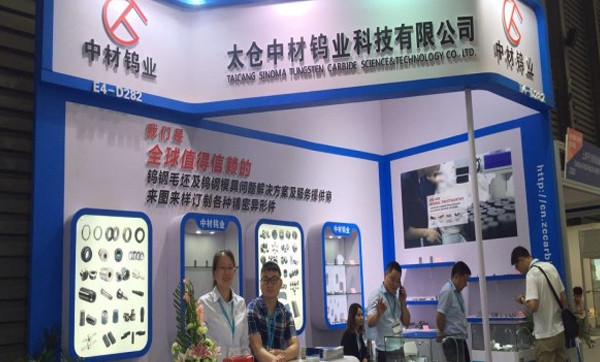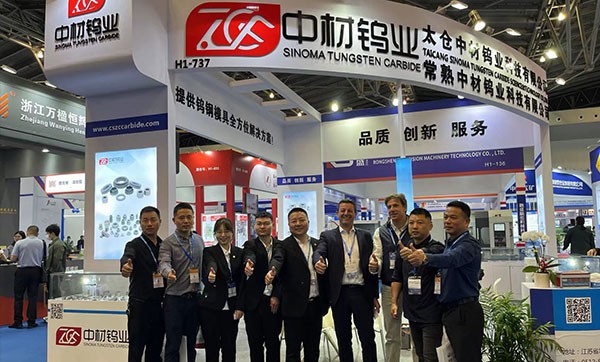Tungsten carbide (WC) is one of the hardest and most durable materials used in industrial applications today. Composed of tungsten and carbon atoms in a rigid lattice structure, it offers exceptional hardness, wear resistance, and thermal stability. This article explores the key characteristics of tungsten carbide, its advantages, and its applications across various industries.
1. Exceptional Hardness & Wear Resistance
· Hardness: Tungsten carbide ranks at 9–9.5 on the Mohs scale, just below diamond (10). Its Vickers hardness (HV) ranges between 1,500–2,500 HV, making it significantly harder than steel.
· Wear Resistance: Due to its extreme hardness, tungsten carbide resists abrasion, erosion, and deformation, making it ideal for cutting tools, mining equipment, and wear parts.
· Comparison with Other Materials
|
Material |
Mohs Hardness |
Vickers Hardness (HV) |
|
Diamond |
10 |
10,000 |
|
Tungsten Carbide |
9–9.5 |
1,500–2,500 |
|
Titanium Carbide |
8–9 |
3,000 |
|
Steel (Hardened) |
6–7 |
800–1,200 |
2. High Strength & Toughness
·Compressive Strength: Tungsten carbide can withstand compressive strengths of over 600,000 psi, far exceeding most metals.
· Fracture Toughness: While brittle compared to steel, modern tungsten carbide grades with cobalt (Co) or nickel (Ni) binders improve toughness, reducing chipping and cracking.
· Effect of Cobalt Content
|
Cobalt Content (%) |
Hardness (HRA) |
Toughness (MPa·√m) |
Best For |
|
3–6% |
92–94 |
8–10 |
Cutting tools |
|
8–12% |
88–91 |
12–15 |
Mining drills |
|
15–20% |
85–87 |
16–20 |
High-impact tools |
3. Thermal & Chemical Stability
·High Melting Point: Tungsten carbide remains stable up to 2,870°C (5,198°F), making it suitable for high-temperature applications.
· Thermal Conductivity: Its high thermal conductivity (110 W/m·K) helps dissipate heat, preventing tool degradation during machining.
· Corrosion Resistance: Resistant to acids, alkalis, and oxidation (especially grades with nickel binders).
4. Electrical & Magnetic Properties
· Electrical Conductivity: Tungsten carbide conducts electricity (similar to some metals), useful in electrical discharge machining (EDM).
· Magnetic Properties: Cobalt-bonded grades are slightly magnetic, while nickel-bonded grades are non-magnetic (ideal for medical and electronic applications).
5. Applications of Tungsten Carbide
Due to its unique properties, tungsten carbide is used in:
· Cutting & Machining Tools (Drills, end mills, inserts)
· Mining & Construction (Drill bits, road milling picks)
· Wear Parts (Nozzles, seals, bearings)
· Medical & Dental Instruments (Surgical blades, dental burs)
· Jewelry (Wedding bands due to scratch resistance)
· Military & Defense (Armor-piercing projectiles)
6. Limitations of Tungsten Carbide
Despite its advantages, tungsten carbide has some drawbacks:
· Brittleness: Prone to chipping under sudden impact.
· High Cost: More expensive than steel or titanium.
· Difficult Machining: Requires diamond grinding or EDM for shaping.
Conclusion
Tungsten carbide is a super-material known for its extreme hardness, wear resistance, and thermal stability. While it is brittle and costly, advancements in binder technology (such as cobalt and nickel alloys) have expanded its applications across industries. From industrial cutting tools to durable jewelry, tungsten carbide remains a critical material in modern engineering.




